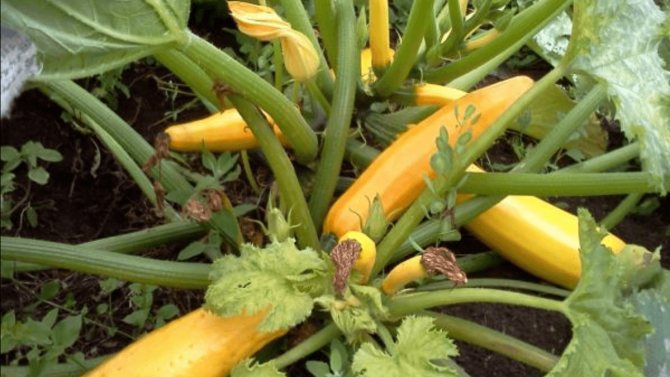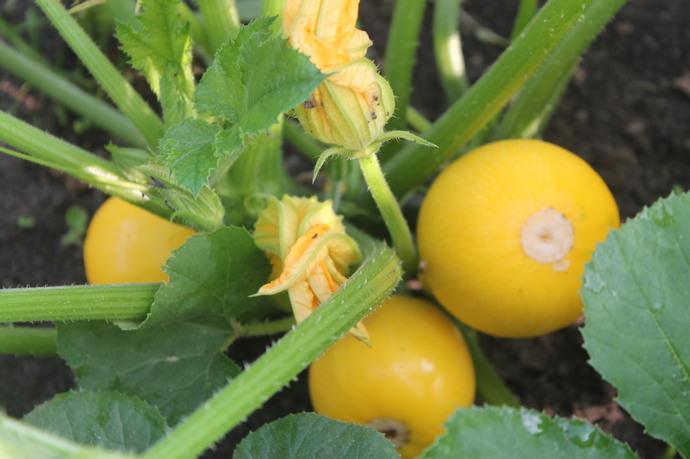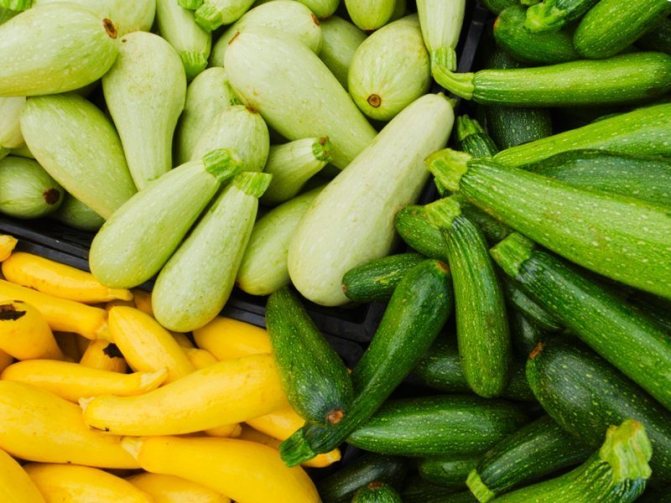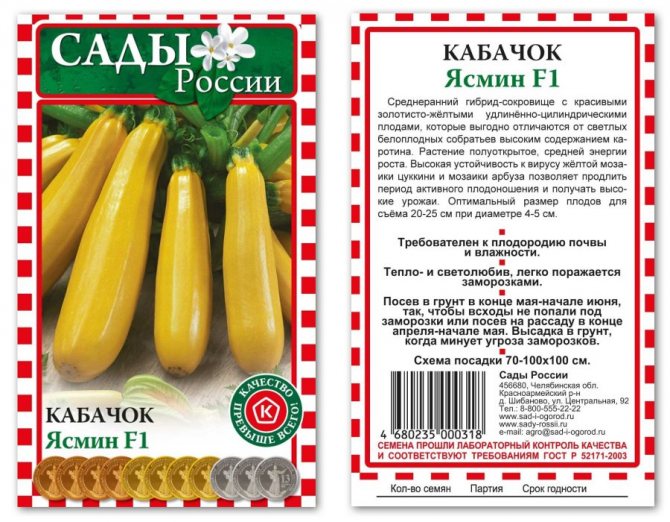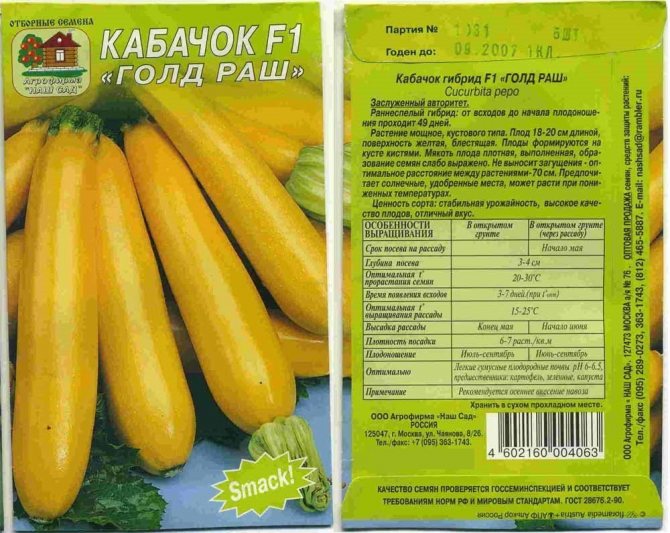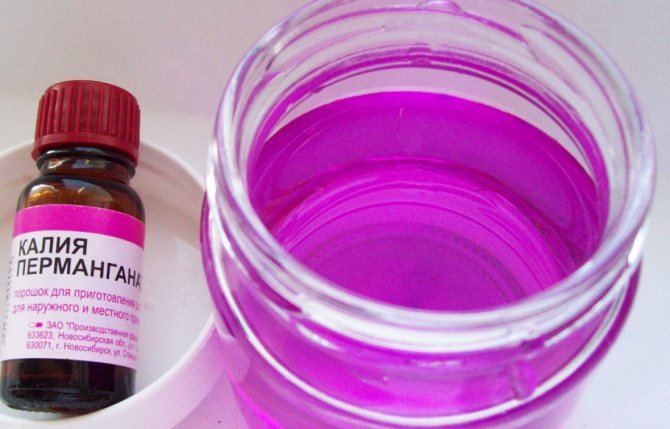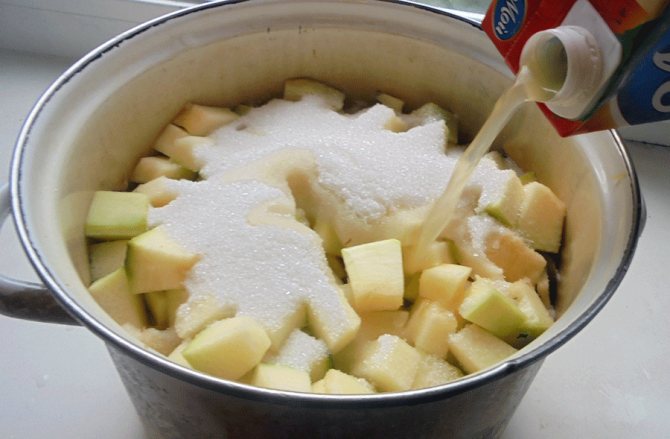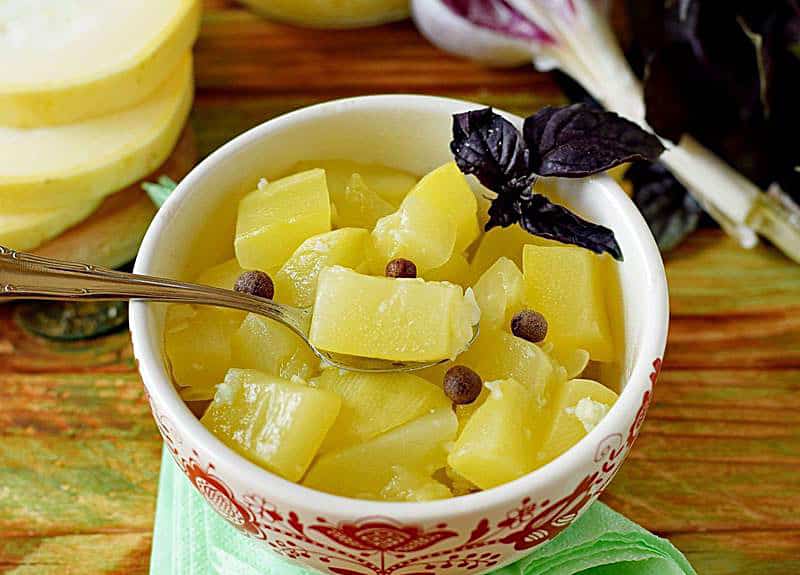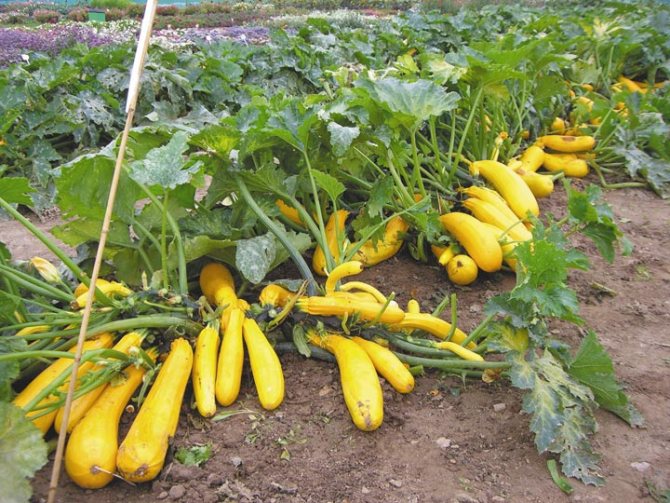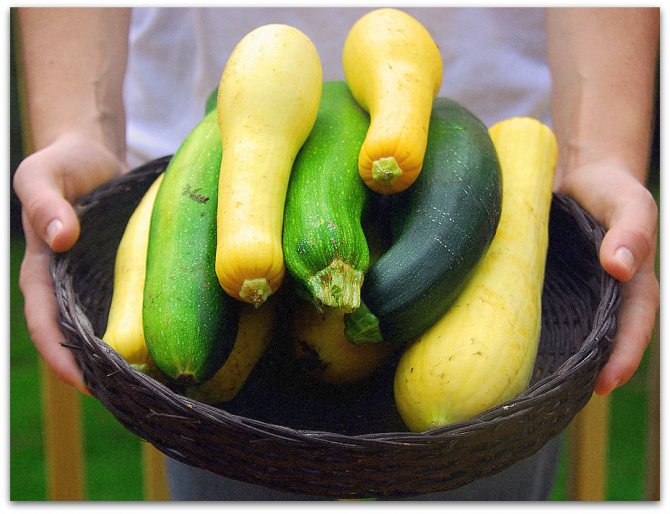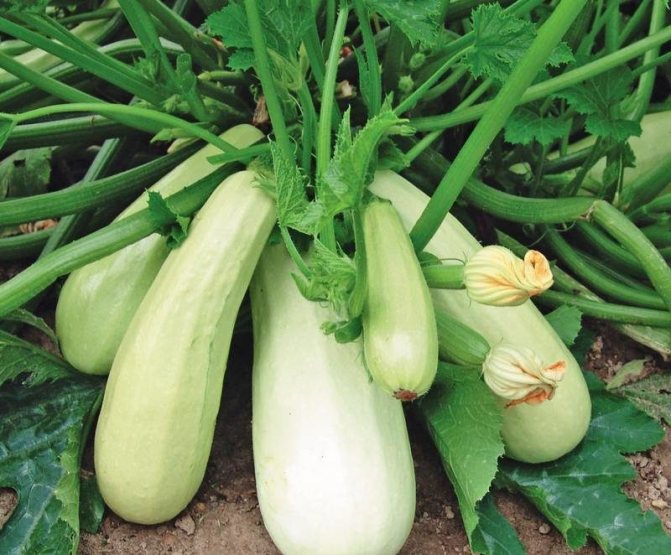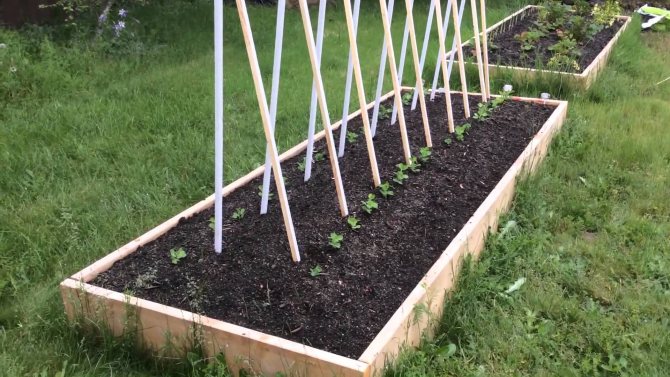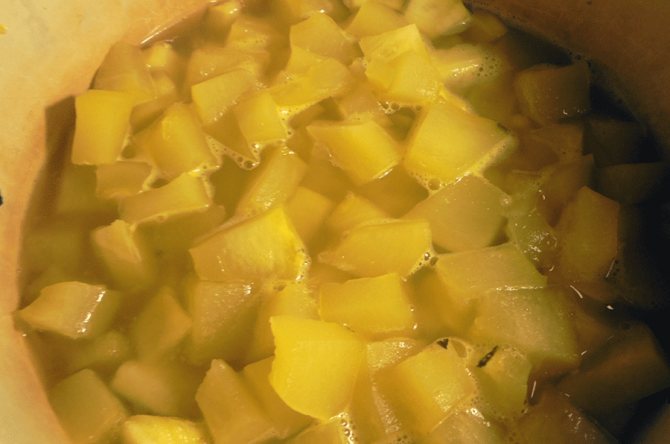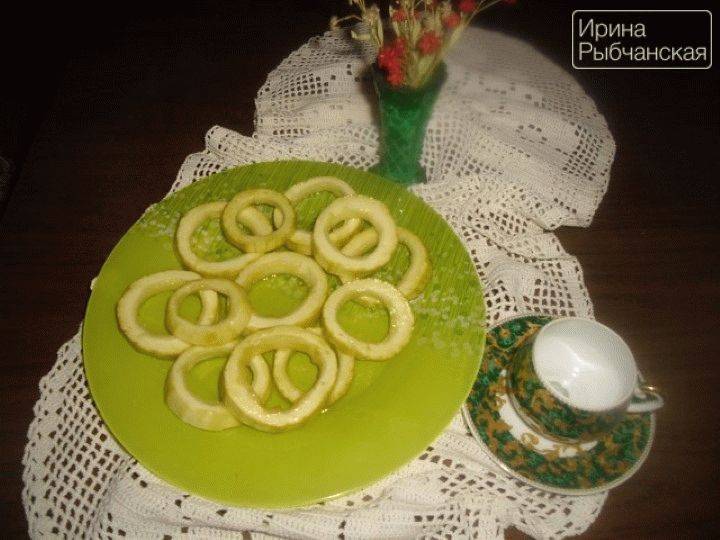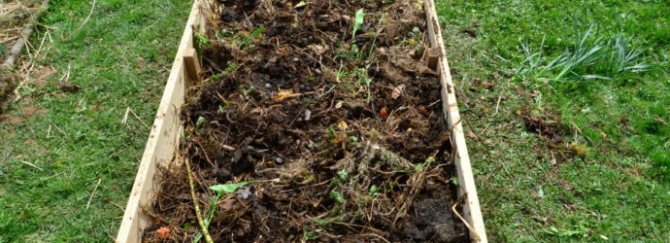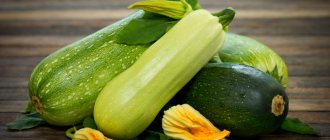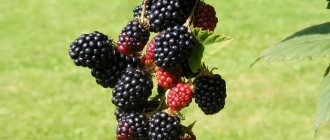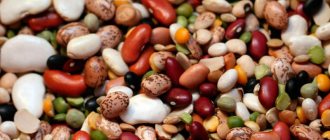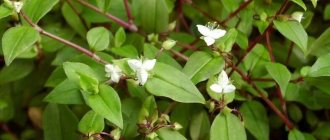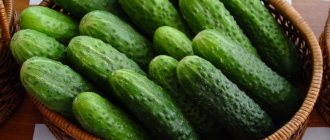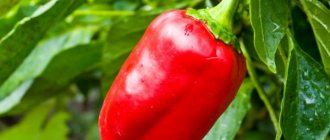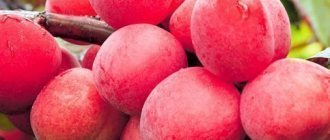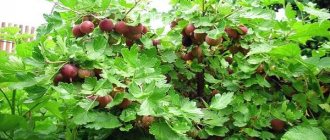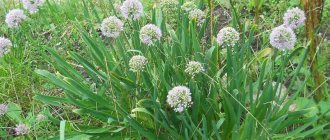»Vegetable growing» Zucchini »Popular varieties of yellow zucchini
0
260
Article rating
The variety of varieties of yellow zucchini is striking in its quantity. The main feature of these species is their bright color, which can even be rich orange. Yellow zucchini is able to grow with standard care, which helps even beginners to cultivate it.
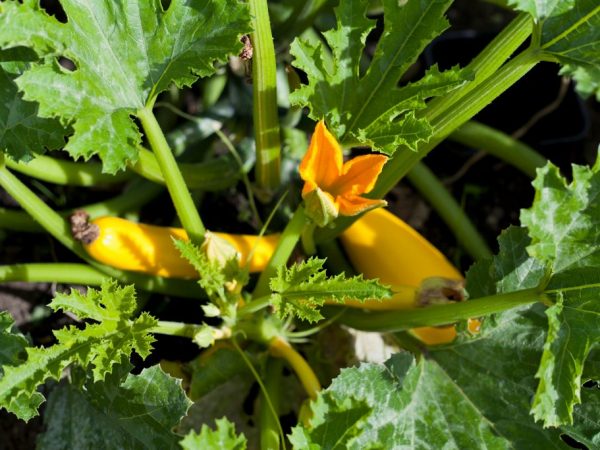
Popular varieties of yellow zucchini
For fresh consumption
Below are the hybrids of overseas selection used in fresh cooking due to their distinctive flavor characteristics.
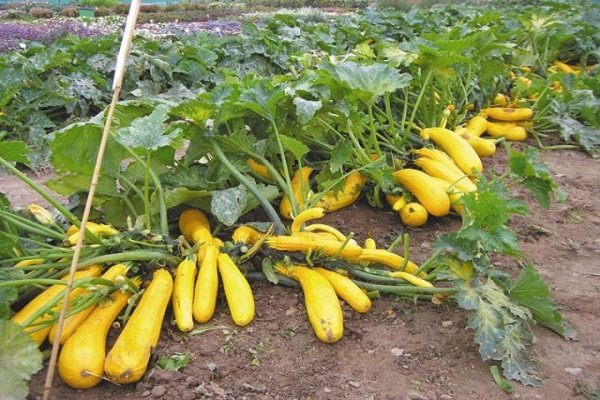

Gold Rush F1
Yellow-fruited squash, ripening 49 days after germination. Smooth, even fruits, the length of which is 18-20 cm, are notable for the pulp of a creamy shade, the texture is delicate. The skin is thin, does not become rough when ripe.
Harvesting from the bush is simplified due to its open type, compactness, erect shoots and leaves. Average yield - 12 kg / m2. The hybrid was developed by Dutch breeders.
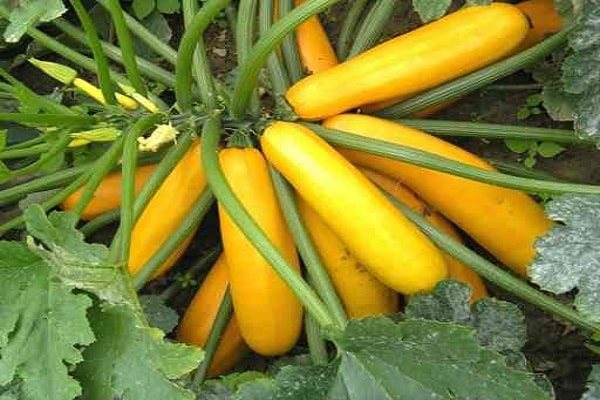

Goldline F1
An early ripening hybrid bears fruit in smooth cylindrical zucchini up to 30 cm long. The pulp is characterized by a sweet taste and juiciness. The type of plant is bush. The hybrid is productive, high-yielding. Zucchini is also used for processing. The average yield is 15 kg / m2. The selection is Czech.
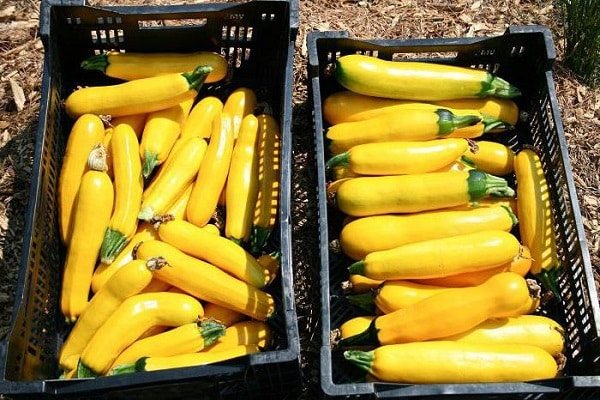

Sunlight F1
Early (from the moment the sprouts appear until the harvest takes 40-45 days), a hybrid of yellow zucchini. The variety forms cylindrical fruits up to 18 cm long and 5 cm in diameter with sweet white pulp. Fruiting is extended, continues until the very frost. Benefits:
- Virus resistance;
- preservation of taste characteristics even with untimely collection of fruits;
- long-term yield of the crop up to 4-6 months.
Sunlight bushes are so compact that they are planted in a thickened pattern: from 4 to 6 plants per 1 m2. With this planting, the maximum yield is achieved - 12 kg / m2. The main drawback is the exactingness of care. The selection is French.
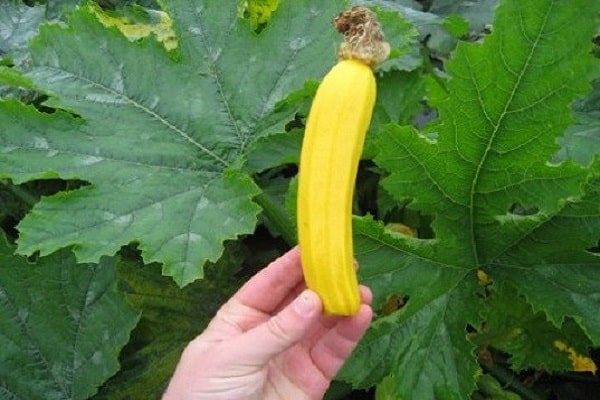

Harvesting and storage
White varieties are harvested upon reaching technical maturity. The main landmarks are the length and weight of the fetus. Gherkins are ready at 120 g, others - from 300 g with a length of 20 cm. You can also check ripeness by tapping on the fruit: a dull sound means ripeness. Hard skin is also an indicator.
It is preferable to pick vegetables every 3-4 days, otherwise they will overripe and new ovaries will not form. Cut the zucchini with a sharp knife, leaving a stalk 4-6 cm long.
For storage, they are washed, dried, and the leaves are removed. The harvest is sorted out, the rotten and damaged are used immediately. Others are left in a cool, dark place, lining it with straw. Cellars and basements are not used - it is too humid there.
Under the right conditions, fruit storage is 2-2.5 months. Late-ripening varieties for northern and temperate climates are chosen for harvesting for the winter.
High-yielding varieties
Gardeners, when choosing a specific type of zucchini, pay attention, first of all, to yield. Below are the varieties and hybrids of zucchini with increased productivity.
Russian size
A variety, the description of which is distinguished by a yellow-orange color of the peel and a special large-fruited: the diameter of one specimen is on average 20 cm, and the weight is 20 kg or more. Ripens late - 90 days pass from the moment the seeds germinate to harvest. The pulp is non-fibrous, tender. Russian size is suitable for long-term storage. The bush is climbing, so the recommended planting scheme provides for a distance of 80 × 80 cm.
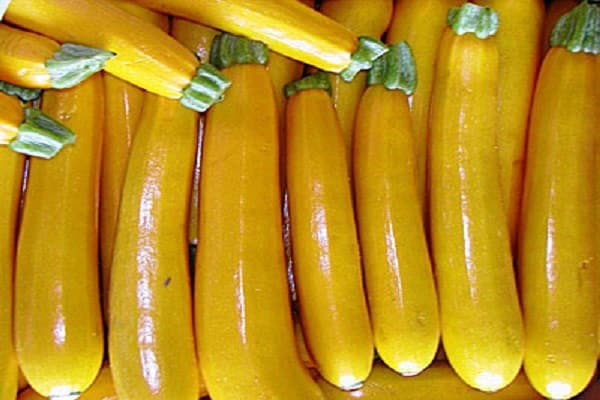

Anchor
A yellow-fruited variety characterized by early ripening (38-40 days), stress resistance, keeping quality and disease resistance. Up to 12 kg of aromatic zucchini weighing 0.9 kg are harvested from 1 m2.
The main distinguishing feature of the Anchor is the increased dry matter content in the pulp. The harvest is stored for up to 60 days. The anchor is grown even in the short Siberian summer. The planting scheme is standard for bush zucchini - 60-70 × 60-70 cm.
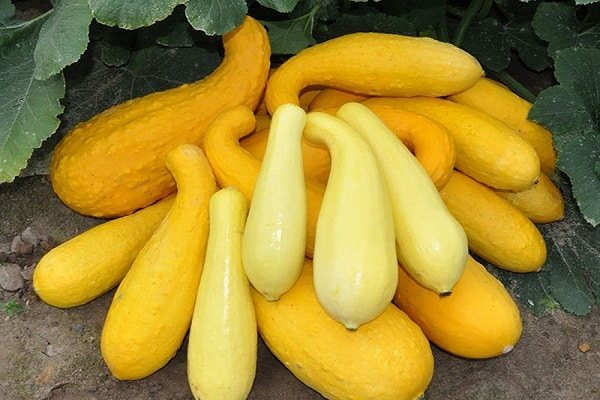

Zolotinka
A mid-early variety of marrow, its fruits are harvested 47-50 days after germination. The average weight of the fruit is 500 g, the length is 15 cm. The pulp is sweet, crunchy, remains firm when preserved, does not change its consistency. The taste is reminiscent of a cucumber. The peel is a bright orange-yellow shade, smooth, glossy. Zolotinka produces female-type flowers, so the fruit is tied successfully.
See also
Why zucchini grow irregularly shaped, what they lackRead
At least 15 zucchini are harvested from one plant. The type of plant is bush. These zucchini are harvested on time, otherwise the taste is lost. When feeding Zolotinka, it is important to control the level of nitrogen in the soil - with an excess of the element, the shelf life of the fruits and their taste characteristics deteriorate sharply.
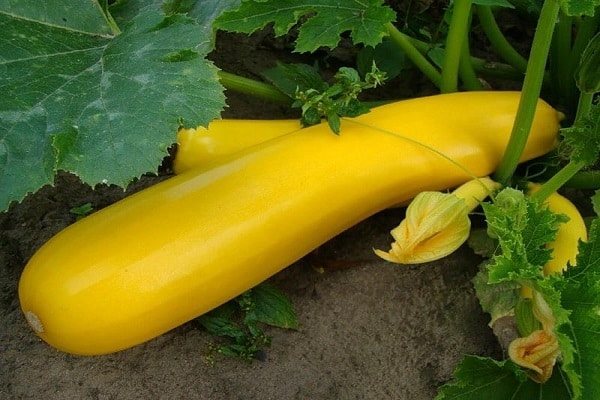

Option 6: Canned zucchini with pineapple juice for the winter
Another interesting option for delicious zucchini. They come out like pineapples - juicy, sweet with a rich taste. When you treat your relatives, do not tell right away what the workpiece is made of.
Ingredients:
- one and a half kg of zucchini;
- eight hundred ml of pineapple juice;
- a quarter kg of sugar;
- one and a half teaspoons of lemon acid.
How to cook
We take the zucchini, wash it thoroughly and wipe it dry. Remove the peel with a vegetable peeler and cut it in half lengthwise.
We cut out the seeds with a spoon - boats are obtained.
We put the boats on the cutting board with the cut-out part down. Cut across into half rings. You can leave it as it is or cut the half rings into three pieces. In any case, the squash is already sliced like canned pineapple.
Pour pineapple juice into a saucepan, add sugar and citric acid. Stir and bring everything to a boil.
When the sugar is completely dissolved, add the zucchini and stir. Cook over very low heat for twenty minutes. Be sure to skim off the foam.
Place the pineapple zucchini in sterile jars and screw the lids tight. Cool under a blanket and store.
»
Unusual varieties of yellow zucchini
An interesting decoration of the garden can be one of the following varieties of zucchini, the fruits of which can amaze with their shapes.
Banana
A hybrid of bright yellow color. Differs in increased productivity (up to 8.5 kg / m2, 30 pieces are tied on one plant), resistance to diseases and positive taste characteristics of the pulp. Fruits are cylindrical, weighing up to 700 g and up to 40 cm long. Zucchini of this hybrid has a universal purpose. Bush plant with decorative leaf plates.
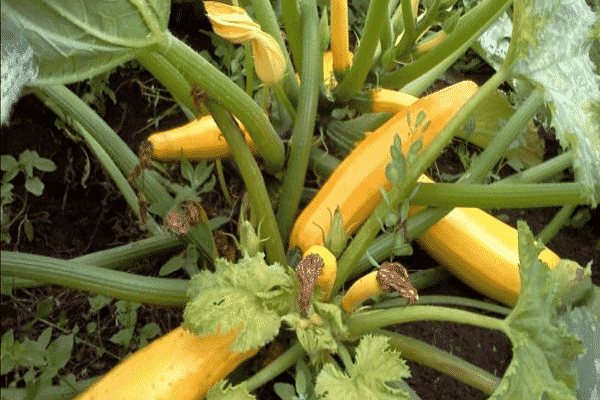

Orange
It stands out among other yellow zucchini varieties with an unusual round shape, the diameter of the fruits reaches 17 cm. The pulp is juicy, tender, with a nutty note. The early-ripening variety bears fruit in 1.5-2 months after sowing the seeds. Zucchini are suitable for conservation and processing, as well as for fresh consumption. The disadvantages of Orange are:
- short storage times;
- rapid overripening of fruits with a decrease in varietal qualities;
- low yield (up to 5 kg / bush).
The plant is strong but compact.
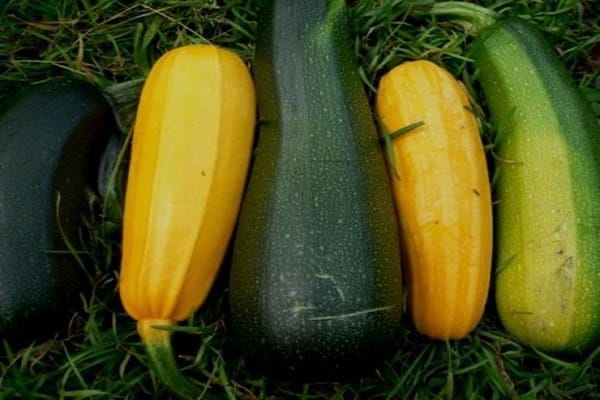

Pear-shaped variety
Zucchini ripen on the 38-52 day after germination and have an average weight not exceeding 1 kg. Pear-shaped is characterized by keeping quality, disease resistance, high taste and marketability. The variety is resistant to temperature changes and bears fruit reliably in unpredictable weather, which is typical for the Ural summer.
With minimal care, it gives normal yields. The pulp is fragrant, interesting orange color, characterized by the content of beta-carotene. The variety is recommended for use in baby and diet food.
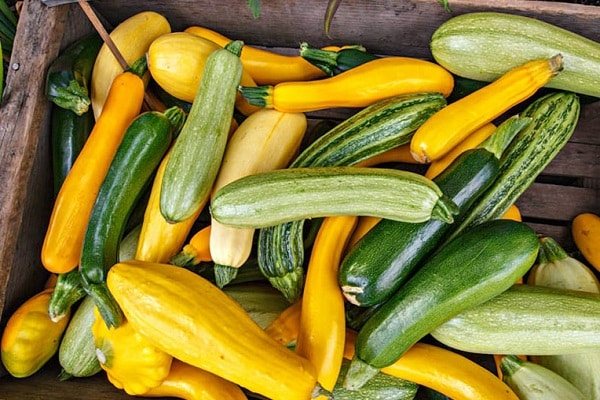

Spaghetti
Zucchini, producing fruits with a dense skin of a bright yellow hue, ripening late (95-130 days). The taste characteristics of this species are revealed only when the fruit is fully ripe. An interesting cross-sectional hybrid - its long-fiber pulp resembles spaghetti. The weight of one specimen reaches 1.2 kg, and the length is 30 cm. Climbing bush, requires formation. Advantages:
- keeping quality;
- transportability;
- taste;
- unpretentious care.
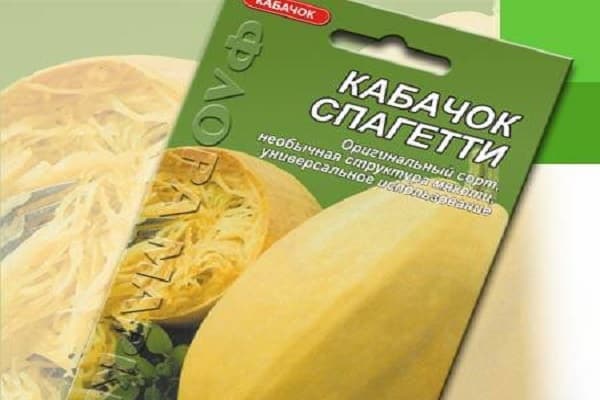

Disadvantages:
- average yield;
- rapid growth of lashes;
- late ripening, due to which not all regions of the country have time to form pulp-noodles.
The recommended landing pattern is 70 × 70 cm.
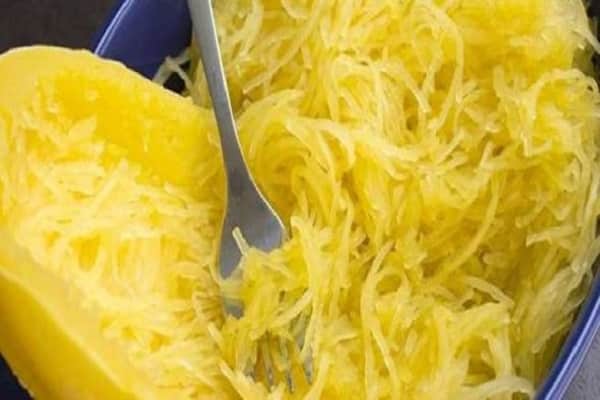

Pineapple
Another interesting early-ripening variety that gives yellow-fruited zucchini. Reviews about Pineapple are extremely positive, it combines excellent taste of fruits and high yield (up to 10 kg / m2).
Fruits are small - weighing up to 900 g, contain few seeds, are not prone to overripe. The pulp is lighter in color than the bright yellow-orange skin. Bush type plant, productive, cold-resistant. The leaf blades have distinctive yellowish spots.
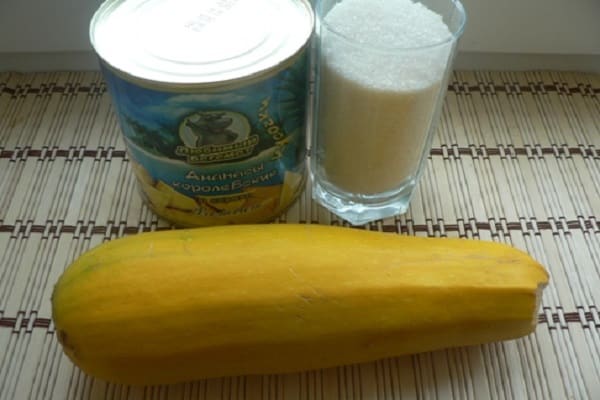

Marshmallow
Bicolor yellow-green hybrid with sweet dessert fruits. These flavoring features of zucchini are manifested with a fruit length of 15 cm - they are eaten even raw. The disadvantage of the variety is the exactingness of care; in the absence of proper growing conditions, Zephyr gives average yields. Particularly drought tolerant. Productivity - 8 kg / bush. The recommended landing pattern is 80 × 70 cm.
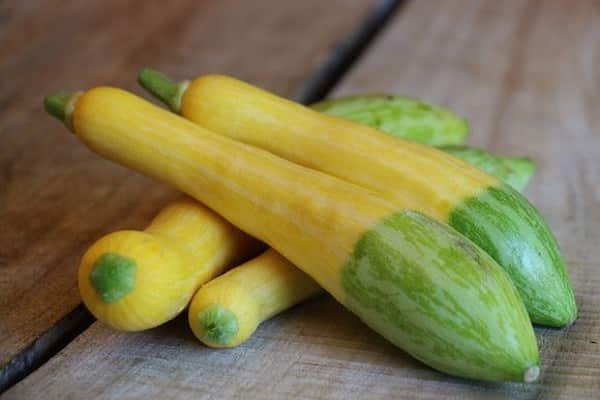

Golden scallop
Medium in terms of ripening (60-65 days), yellow-fruited zucchini. The description of its shape is quite interesting - pear-shaped, with large tubercles. The weight of one specimen reaches 2 kg, the taste is excellent, the keeping quality and transportability are good. The advantages of the variety include high cold resistance. Planting scheme - 70 × 70 cm.
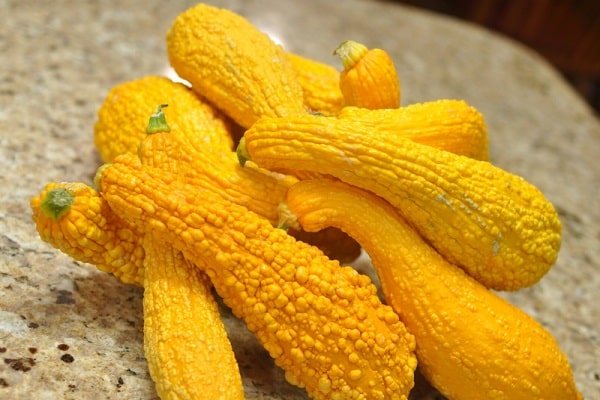

Gardeners reviews
White zucchini varieties are predominantly early and mid-season, therefore they are grown in all regions. Many gardeners speak positively about the subspecies of culture. They are easy to grow, store and care for.
Some varieties do not meet the declared parameters. Optimal species for cold climates: Gherkin, Polar Bear, Malchugan, Rolik, Sama, Aral. They have an ideal growing season and the fruit is universal for all types of processing.
For harvesting for the winter, only ripe fruits are harvested, placed in a cool, dark place. Gardeners say that the culture lies for about 2-2.5 months. without deterioration in qualities.
To get a good harvest promised by the manufacturer, they follow the rules of cultivation when preparing planting material and soil, fertilizing, forming, watering.
The best bush varieties for outdoor cultivation
Shrub zucchini are characterized by compact lashes, which allows you to significantly save space on the site (the standard planting scheme for bush varieties and hybrids is 40 × 50 cm), and wide leaf plates reliably protect the fruits from the vagaries of the weather and pests. A list of the best representatives of this type is given below.
See also
How to grow and care for courgettes in a polycarbonate greenhouseRead
Aeronaut
A variety with a thin dark skin and slightly sweet yellowish flesh. Fruits ripen up to 1.3 kg, yield - 7 kg / m2. In terms of ripening, the Aeronaut belongs to the early maturing - zucchini are harvested 46 days after germination. The advantage of the Aeronaut is its unpretentiousness to the soil composition - it is capable of producing crops on loams and soils with an acid-alkaline reaction. The main disadvantage of this zucchini is its poor resistance to powdery mildew and some viral diseases.
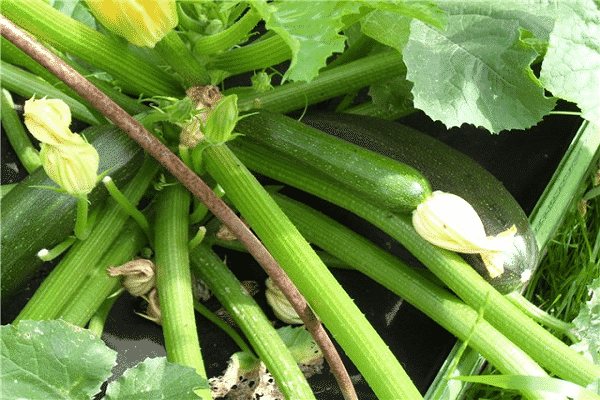

White
The early maturity of this variety allows you to harvest white in just 35-40 days after the emergence of sprouts. Elongated oval courgettes have a dense, tasty flesh. The average weight reaches 1 kg. White is stored for a long time. Resistance to common diseases of the culture (powdery mildew, gray rot) is high. Advantages of the variety:
- versatility of fruit use;
- unpretentious care.
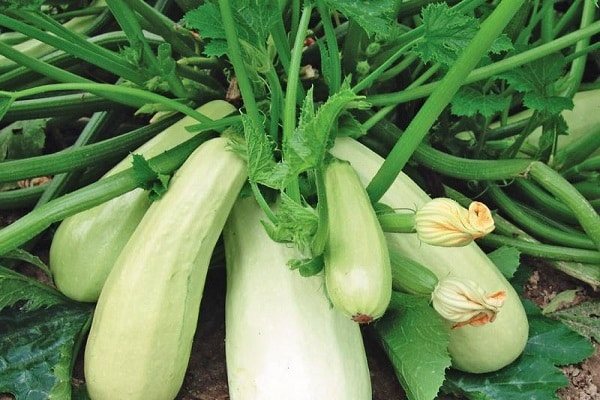

Waterfall
The fruit has a standard cylindrical shape and medium size - its weight rarely exceeds 500 g. The flesh is white, tasty and firm. Zucchini appear early and can be harvested 42 days after seed germination. The resistance to diseases is average, the Waterfall is not resistant to powdery mildew and bacteriosis. The yield is 6-7 kg / m2. During the growing season, it needs additional fertilization... The fruits are stored for a long time in room conditions.
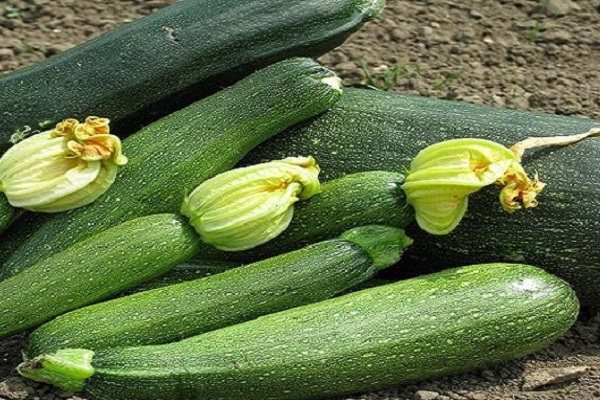

Odessa
The flesh of this zucchini is yellow with a slight pinkish tinge. The early ripening variety on one bush forms up to 9 cylindrical fruits with a light green skin, weighing a little less than 1 kg and up to 25 cm long. It is characterized by increased resistance to common diseases, cold resistance, bush branching. The type of plant is bush. Resistant to short-term frost.
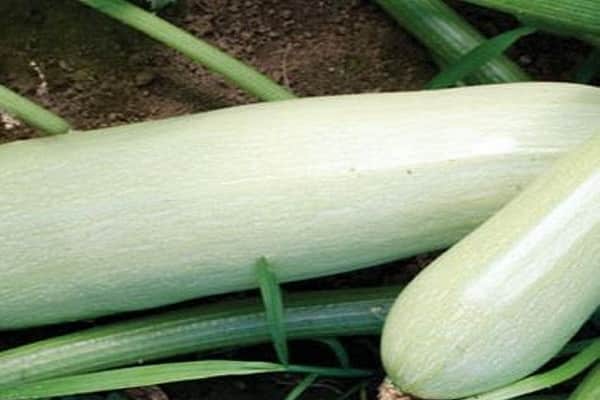

Option 4: Zucchini with pineapple juice for the winter with squash
Add one large squash to the zucchini and prepare a delicious preparation with purchased pineapple juice.
Ingredients:
- one and a half kg of zucchini;
- one or two large squash;
- seven hundred and fifty ml of pineapple juice;
- one and a half teaspoons of lemon acid;
- a glass of granulated sugar.
How to cook
Wash the zucchini thoroughly, dry them with a tea towel and cut into half rings, then each in half or with the usual medium cube, just not very thin.
Rinse the squash too, wipe dry and cut into cubes.
Pour pineapple juice into a saucepan, add sugar and immediately add citric acid. If you have nectar instead of juice, it will work too.
We shift the zucchini and squash into a saucepan and mix with a spatula. Bring to a boil and boil vegetables in pineapple juice for twenty minutes. If foam appears, remove it with a slotted spoon. Cook without a lid.
After the time has elapsed, arrange the slices of zucchini and squash in jars, pour pineapple syrup. Roll up and prepare for long-term storage in the traditional way. No need to sterilize.
Best self-pollinated parthenocarpic species
Zucchini-parthenocarpics do not need pollination of flowers for the formation of fruits, therefore they give stable yields regardless of the weather and insect activity, are suitable for growing in greenhouse and greenhouse conditions. The best among them are the varieties listed below.
Kavili
A hybrid that forms medium-sized zucchini weighing up to 0.5 kg and no more than 25 cm long. The pulp is pleasant to the taste, tender, can be consumed even raw. Like many other varieties and hybrids, its taste deteriorates if it is picked late. Cavili begins to bear fruit early, after 40-45 days from the moment the first shoots appear, the crop is harvested from it until frost. The hybrid is resistant to powdery mildew disease. The compactness of the plants allows planting 4 bushes per 1 m2 and getting up to 9 kg of fruits from this area... Dutch selection.
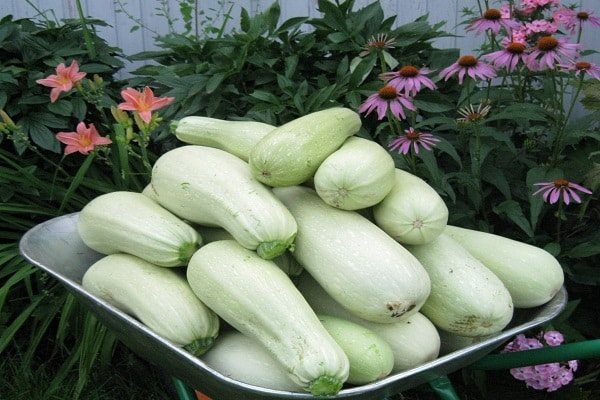

Jellyfish
The early ripening variety, the harvest of which is harvested in just 35 days from the moment of seed germination. The zucchini ripen medium: their weight is about 800 g, and the length is 25 cm, the shape of the fruit does not deform during ripening, the color of the skin changes from greenish to white as it grows. The pulp is not very sweet, there are few seeds, the peel is thin, it does not harden if it is not picked in time.
The fruits are suitable for long-term storage. The yield reaches 9 kg / m2. The plant belongs to the bush type. Sometimes it is affected by powdery mildew. Jellyfish grows and bears fruit in nutrient-rich soils.
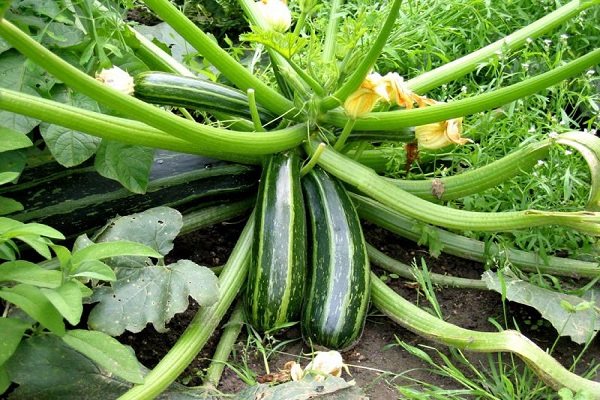

Parthenon
A reliable medium-growing hybrid that bears fruit in extreme heat conditions or, conversely, torrential rains. It is characterized by resistance to diseases caused by fungi. The palatability of the fruit is excellent: the pulp is juicy, sweetish.
Bears fruit tirelessly, 40-45 days after germination and until October. Moreover, the yield of the hybrid is up to 15 kg / m2. The average weight of a squash is 300 g, length is 20-25 cm. Fruits are suitable for freezing. Long-term storage of zucchini is possible. It is recommended to plant 3-4 bushes per 1 m2... The hybrid belongs to the achievements of Dutch breeding.
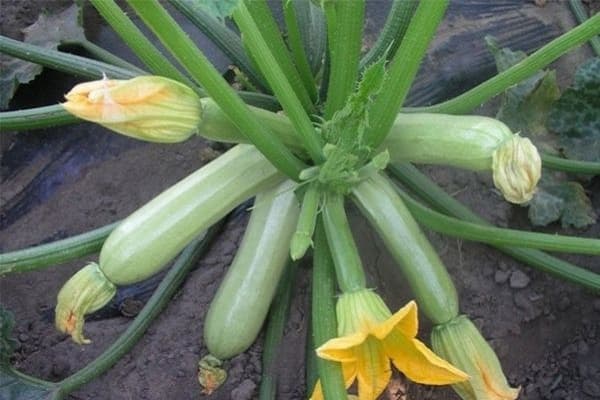

Seed preparation for sowing
The material in packages from the originators is often sold already processed and calcined, so they are immediately planted in the soil. There are 2 ways to do this: dry planting and seedlings.
The first is suitable for regions with a warm and stable climate, and the second is suitable for the north and temperate latitudes, where the sprout is exposed to sudden temperature changes.
Also, the material is harvested from the obtained fruits in order to obtain the maximum indicators of size, taste and yield. Seeds are processed before planting in several stages:
- disinfection;
- etching;
- hardening;
- pecking.
The procedures increase the yield, such plants are less susceptible to fungal diseases, and they grow powerful. Most of the varieties are compact, because bushes vegetate longer. Therefore, the formation of white-fruited zucchini is almost unnecessary.
Calibration and disinfection
The prepared material is placed in a 1% salt solution. Floated seeds are unsuitable for planting because they are empty. The rest are washed and disinfected. Place them for 6 hours in hot water - 45-50 ° C.
After cooling down, add a new portion. Rinse in cold water for 2-3 minutes. If the gardener is confident in the quality of the planting material, then the following processing steps can be skipped.
Etching
Special solutions are prepared, in which the material is kept for 10-16 hours at room temperature. These are drugs for fungal infections:
- alirin-B;
- phytosporin-M.
The procedure reduces the risk of diseases of young shoots, and also forms the plant's resistance in the future. This is a necessary step, given the short growing season of the crop.
Hardening
This method prepares the seeds for changing weather. During the day they are left at room temperature and placed in the cold overnight. This is done for 3-4 days. Also prepare solutions of biostimulants - in them the seeds are soaked for better germination.
Another way is to put it in the refrigerator for a day, and then leave it in the sun for a week. The processed material is stored for no more than 24 hours - it is immediately planted in the substrate, otherwise it will dry out.
Pecking for seedlings
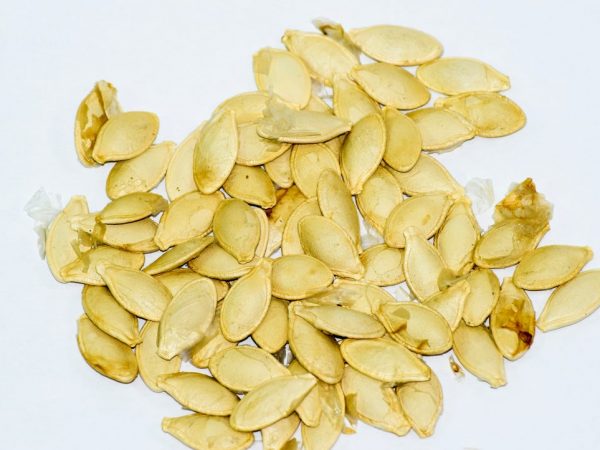

It is advisable to germinate the seeds before planting.
Some gardeners, before stimulation, put the seeds in a wet bag in the oven at 50-60 ° C or leave them in this form near the battery for 30 days. The fabric needs to be dampened. The material will start to sprout (at least 5 mm), then it can be planted in the soil.
Seedlings are prepared in early April. Pots are suitable for this. The recommended container volume is 0.5 liters. You can make seedlings at home in this way:
- prepare the soil in a ratio of 1: 3: 5: 0.5.This is leafy earth, humus, peat, sawdust;
- place the substrate in a pot, loosen it;
- bury a seed with a sprout of 1-3 cm;
- water.
Seedlings will appear in 3-5 days. The room is kept at a temperature of 20-23 ° C, the seedlings are watered, and they provide access to natural light or lamps. They must be planted in the garden after 1-1.5 months, when the plant has leaves.
A week before planting in the ground, they are taken out to the balcony or greenhouse so that the plant adapts to the natural temperature. Usually placed in the ground in late May - early June. The preparation will increase the chances of survival of the bushes, so the yield will be large.
Sea buckthorn recipe
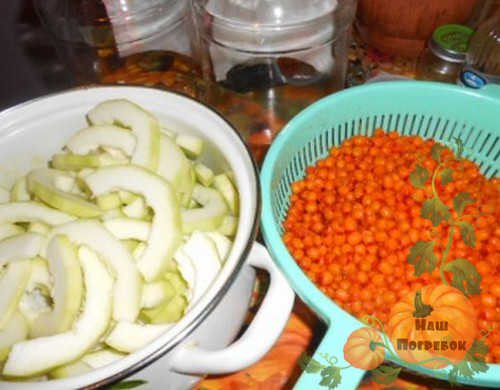

Ingredients for cooking:
- Fresh sea buckthorn - 3 kg;
- Zucchini - 3 kg;
- Crystalline sugar - 4 tbsp. l. for each 1 liter can.
Description:
- Sort the sea buckthorn thoroughly and then wash. Wash the courgettes, peel, and then cut into small cubes.
- Fill clean, dry jars layer by layer with sea buckthorn and zucchini.
- Each layer should be poured with 1 tbsp. sugar (with a slide). Try to fill the jars as tightly as possible, as the layers will settle as the juice is released.
- Cover the filled jars with lids and send them to sterilize for 15 minutes. After sterilization, the jars should be rolled up immediately.

